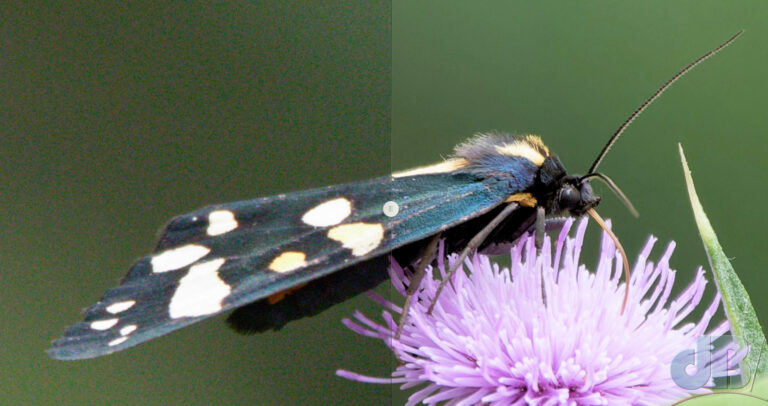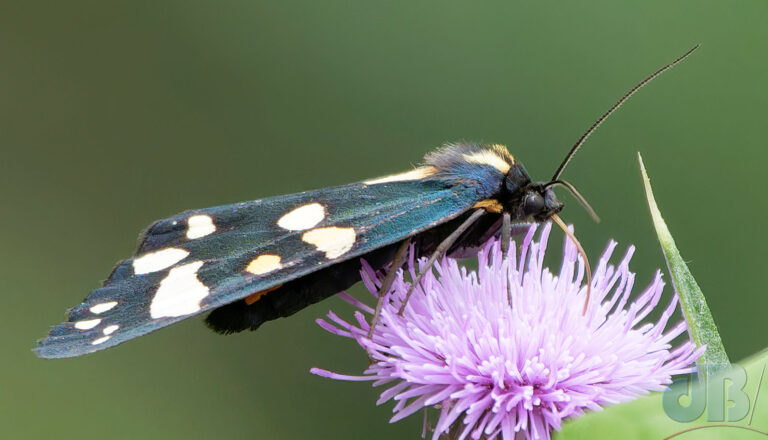I visited Chippenham Fen NNR. Hoping to see Purple Emperor and seeing a solitary White Admiral instead. Also saw the nationally rare, fenland Silver-barred moth, and lots of Scarlet Tiger moths. It was a grey day by the time I got a snap of a Scarlet Tiger nectaring (one of the only moths of this group in the UK that can feed as an adult). Of course, being a grey day, the light levels were low below a bank of trees with the favoured thistles.

As you can see from the left-hand portion of this photo, there was a lot of noise in the image. I used DxO PureRaw 3 (right-hand portion processed with the DeepPrimeXD AI setting) to cut the noise and do a little bit of sharpening to the image and then PaintShop Pro to adjust levels in this split-screen shot.
The photo was taken from about 3 metres away, closest I can get with that my big zoom lens, a Sigma OS 150-600mm lens fully extended on a Canon 7D mark ii. And, cropped from a pixel-width of 5472 to just the moth and some of the thistle, which gave me a 1590-pixel wide image, fine for the web and social media.
Camera settings used were shutterspeed 1/800s, f/6.3, and ISO 2500. I reckon PureRaw3 saves you about three full stops of ISO. So, the cleanup of this photo at ISO 2500 is giving you an image equivalent to what I would have got if I’d been able to get a correct exposure at ISO 320.
However, I felt that although the DxO AI software had done an incredible job on removing noise, as it always does, the photo could do with a different type of additional sharpening. So, I fed the original output from DxO into Topaz SharpenAI and then did my usual PaintShopPro tweaks on the saved filed from that software to get what I think is an even better final photo.
